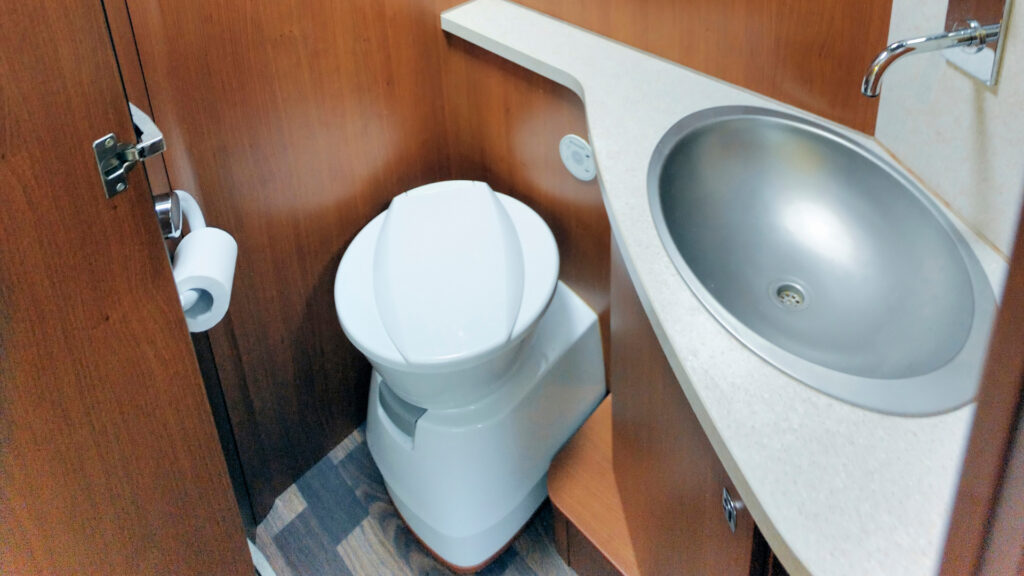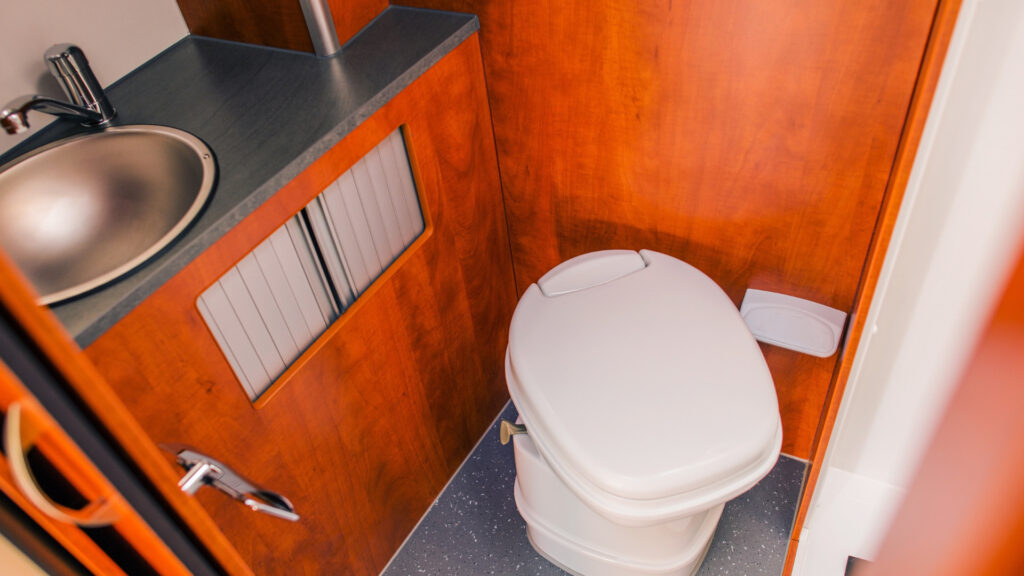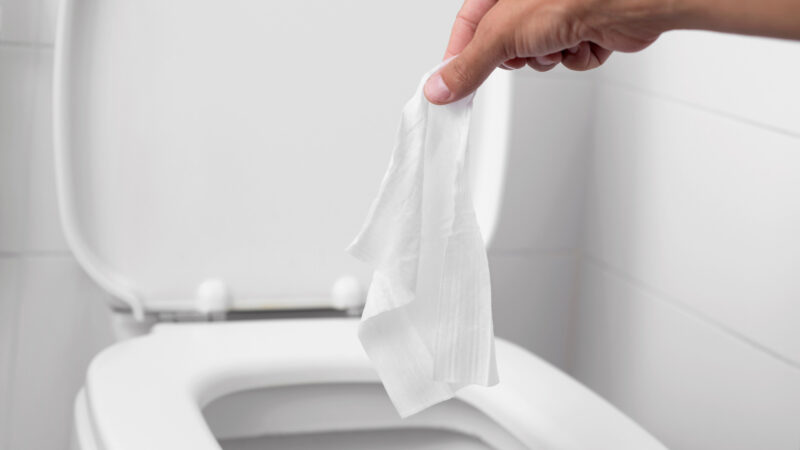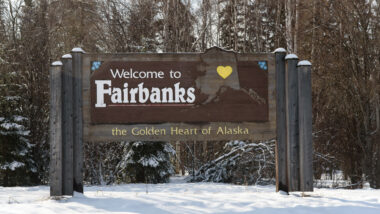Table of Contents Show
Getting clean after using the restroom is necessary to maintain good hygiene. Some bathroom users turn to flushable wipes to do the job.
However, RV and residential plumbing systems vary significantly from each other. So can you use flushable wipes in an RV?
Today, we’ll answer this important question and provide some tips for avoiding other common toilet troubles. Let’s get started!
What Are Flushable Wipes?
Flushable wipes are moist wipes designed as alternatives to toilet paper. Because they’re wet and thicker, they can make it easier to remove any waste left behind. They’re like baby wipes for adults.
Manufacturers claim the materials used for these wipes allow them to disintegrate when flushed down the toilet. However, the use of them remains controversial in the plumbing community.
Some say owners should avoid flushing them; others fear they create a potential environmental hazard. On the opposite side of the spectrum, some users have no plans to find alternatives.
Are Flushable Wipes Safe to Use in an RV?
You must be extremely careful with what gets flushed down your RV’s toilet. Some owners experience clogs on a regular basis. While flushable wipes may get you cleaner, they’re a serious problem for your RV’s black tank.
They may disintegrate, but it can take several weeks. This means they won’t have time to dissolve while they sit in your black tank.
A flushable wipe can block your black tank and prevent it from draining properly. You can go the DIY route to fix these clogs, but some may require you to call a professional. This can be a costly mistake. As a result, we recommend you avoid using flushable wipes in an RV.
Are Flushable Wipes Really Flushable?
RV plumbing systems aren’t the only ones that experience issues. While flushable wipes can disintegrate, it’s not a quick process. Depending on how many people use the restroom, you could pile several dozen more into the system while only a single wipe breaks down.
Some plumbers have uncovered massive clogs of wipes in septic tanks and other sewage systems. Those that do make it through the system can then cause issues for the environment or sewage treatment plants.
While the manufacturer may label them flushable or “quick dissolving,” they’re not paying the bill when you have plumbing problems. If you can’t fathom switching to an alternative option, choose to dispose of wipes correctly. Place them in a sealed trash can to help keep odors at a minimum.

How Long Do Flushable Wipes Take to Break Down?
Flushable wipes may break down, but it’s not a quick process. A wipe can take weeks or even months to disintegrate in most conditions. It’s no wonder why plumbers frequently get calls about issues.
When you compare the same process but with toilet paper, you get a very different result. The instant that toilet paper contacts water, it begins to break down. You can watch the scene unfold before your eyes. Within a few minutes, there’s not much left.
We can’t say it enough, but you’re taking a significant gamble by tossing flushable wipes into a toilet. For us, it’s a risk not worth taking. We recommend you safely dispose of your wipes or find a suitable alternative to get the job done.
How to Avoid Clogs in Your RV Plumbing
Clogs happen often in RV plumbing, whether from flushable wipes or other issues. However, there are some things you can do to minimize the chances of them occurring. Let’s take a look.
Be Mindful of What Goes Down the Drain
You can’t flush whatever you want down a residential toilet, and you can say the same about RV toilets.
You need to be careful about what goes down the drain. While most adults know better, that’s not always the case. In addition, many parents have interesting stories of what their child flushed at one point or another.
We’ve heard of unique things making their way into an RV’s black tank and causing issues. Keep the lid down to prevent anything from falling into the toilet, and keep an eye on little ones. It only takes a second or two for most kids to create a big problem.
Use RV-Safe Toilet Paper
You can find RV toilet paper in camping aisles and outdoor supply stores. However, it’s costly and can deliver less-than-ideal results. Instead, many RVers use septic-safe toilet paper and have no issues.
If you want to test your toilet paper to see if it’s safe, you can do the water test. Grab a glass jar and fill it half full of water. Place a few pieces of your favorite toilet paper in the container. Place a lid on the jar and give it a few good shakes.
If the paper is RV-safe, you can watch the paper break down almost instantly. If not, you’ll need to find a new brand.
Pro Tip: If you’re looking for the Best RV Toilet Paper for Your Holding Tank (And Rear!, we’ve got you covered!
- 48 Double Rolls of Scott Rapid-Dissolving Toilet Paper (6 packs of 8), 1-ply, 231 sheets per roll; toilet paper that's...
- Scott Rapid Dissolving toilet tissue is the #1 choice made for RVs and boats
- BEST RV TOILET PAPER - 8 super soft rolls per pack, 500 sheets/roll, 2-ply, biodegradable. Our rv toilet tissue is made...
- FAST DISSOLVE TOILET PAPER - Our quick dissolve toilet paper is designed to dissolve faster and more completely than...
Flush Your Tanks Often
Keeping your tanks clean is essential to prevent gunk and build-up in your system. How often you should flush your tanks will depend on how often you use your rig.
You should flush your tanks after every trip if you’re a recreational camper. However, full-time travelers can get by with every second or third time they dump their tanks.
Many modern rigs come with black tank flush adapters. Use a dedicated water hose for this connection instead of the potable hose you use to fill your freshwater tank. Fill the tank with clean water, but avoid overfilling.
Dump the water from the tank and repeat the process until you no longer see discoloration or particles in the water.
Use Plenty of Water
The more water you use when flushing, the better. Water assists with breaking down the contents of your black tank.
While we don’t encourage you to be wasteful or excessive, you want plenty of water in your black tank. One way to ensure you always have enough is to add three to five gallons after emptying your tank.
Keep in Mind: Can You Put an Incinerator Toilet in an RV? Let’s find out!

Educate All Occupants
One of the most important things you can do to protect your RV plumbing system is to educate your fellow occupants. You don’t know what goes on behind the closed door of a bathroom. They may not realize the impact of using a lot of toilet paper.
It’s also a good idea to teach kids, regardless of age, how to properly use an RV toilet. It’s an excellent time to remind them that only toilet paper and waste should go down the drain. Warn them to keep toys and other objects away.
Clogging Catastrophe or Convenient Solution?
Unfortunately, flushable wipes tend to be more of a clogging catastrophe than a convenient solution. Putting them into your plumbing system can do more harm than good.
If you continue using flushable wipes, dispose of them properly. If you continue to flush them, we hope you know that we tried to warn you.
Last update on 2024-12-26 / Affiliate links / Images from Amazon Product Advertising API








